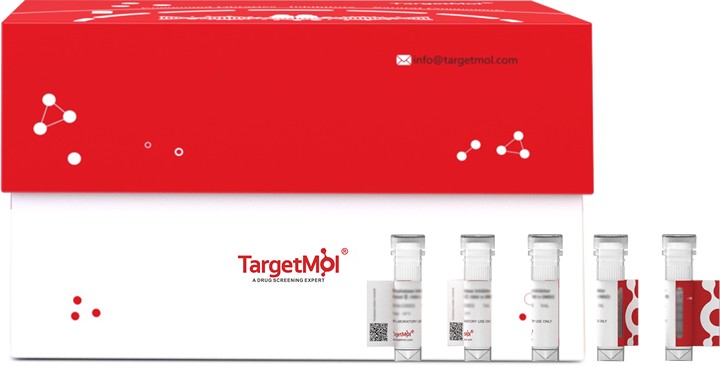
GADD45A Protein, Human, Recombinant (His & GST)

TMPY-02150
Molecular Weight46.2 kDa (predicted); 46 kDa (reducing conditions)
Product group Chemicals
Overview
- SupplierTargetMol Chemicals
- Product NameGADD45A Protein, Human, Recombinant (His & GST)
- Delivery Days Customer16
- CertificationResearch Use Only
- Molecular Weight46.2 kDa (predicted); 46 kDa (reducing conditions)
- Scientific DescriptionGADD45A is a member of the GADD45 Family, and has been found to associate with several cytoplasmic and nuclear factors and has been implicated in several cellular functions, including MAPK signaling, cell cycle regulation, DNA repair and genomic stability, apoptosis, and immune responses. The GADD45 Family of genes is rapidly induced by different stressors, including differentiation-inducing cytokines, and there is a large body of evidence that their cognate proteins are key players in cellular stress responses. GADD45A protein has been reported to interact with multiple important cellular proteins, including Cdc2 protein kinase, proliferating cell nuclear antigen (PCNA), p21Waf1/Cip1 protein, core histone protein and MTK/MEKK4, an up-stream activator of the JNK/SAPK pathway, indicating that GADD45A may play important roles in the control of cell cycle checkpoint, DNA repair process, and signaling transduction. GADD45A expression in response to genotoxic stress illustrates a more complex scenario, wherein transcriptional changes operate in concert with mRNA turnover and translational regulation. GADD45A was the first stress-inducible gene determined to be up-regulated by p53 and is also a target for the p53 homologues, p63 and p73. The decreased GADD45A expression is also considered a survival mechanism, as cancer cells without this control can evade the apoptotic pathway leading to increased tumourigenesis. As GADD45A is an essential component of many metabolic pathways that control proliferating cancer cells, it presents itself as an emerging drug target worthy of further investigation.
- Storage Instruction-20°C
- UNSPSC12352200
